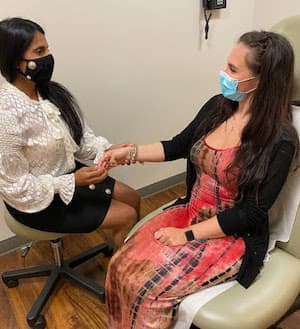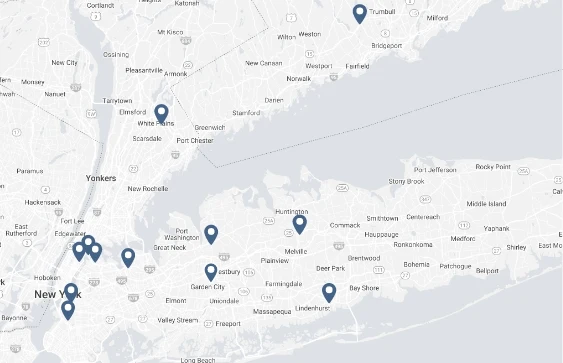
The Institute for Hand Surgery at Long Island Plastic Surgical Group is composed of experienced plastic surgeons that provide comprehensive care for conditions of the hand, upper extremity, and peripheral nervous system. Oftentimes, plastic surgeons do not come to mind for the treatment of hand issues and injuries. With exposure to a vast array of conditions, plastic surgeons are highly proficient in treating conditions of the upper extremity and peripheral nervous system. Our team consists of subspecialty-trained plastic surgeons who can treat all types of injuries and disorders. This includes:
DE QUERVAIN’S TENDINOSIS
Patients with De Quervain’s Tenosynovitis, commonly known as De Quervain’s Tendinosis, have painful tendons on the thumb side of the wrist. In De Quervain’s Tenosynovitis, the first dorsal compartments are held within a tunnel-like tendon sheath. Excessive movement of the tendons causes inflammation, pain and swelling within the tendon sheath. This can be due to a thickening of the soft tissues that make up the tunnel or an increase in the amount of soft tissue within the tunnel.
Learn more in this blog authored by Dr. Haritha Veeramachaneni.
COMPRESSED NERVES
Nerve compression syndrome (NCS) is also known as nerve entrapment syndrome, compression neuropathy, entrapment neuropathy, or simply a trapped nerve. Symptoms can include swelling, redness, inflammation, numbness and tingling, muscle weakness, as well as pain. There are many types of NCS; Each affects a different nerve that may arise in the upper extremity, the neck, torso, trunk, or in the lower extremity.
The two most common types of NCS are: Carpal Tunnel Syndrome & Cubital Tunnel Syndrome.
Learn more about these and other types of nerve compression syndromes in this recent blog by Dr. Laurence Glickman.
ARTHRITIS
Arthritis is a joint disorder characterized by inflammation. The Arthritis Foundation estimates that 1 in 5 people over the age of 18 will develop arthritis. The most common signs of arthritis include pain, stiffness, swelling, redness, and decreased range of motion. While it is common to have this joint disorder, there are different types of arthritis of the fingers.
Read more about the different types of arthritis in this blog by Dr. Roger Simpson.
TECHNOLOGY RELATED HAND CONDITIONS
Like it or not, technology has become an integral part of our daily lives in today’s world. The constant use of smartphones, tablets, laptops, and other devices has been associated with an increase in certain types of musculoskeletal injuries.
These conditions often present with pain and are categorized as repetitive use, overuse, nerve compression, or strain injuries. Often the result of poor ergonomics, hand or arm positioning, and repeated motions, this combination of factors can lead to conditions referred to as texting thumb / Nintendo thumb, “selfie-elbow,” and more.
To learn more about these conditions, common treatments, and how to prevent them, check out this blog written by Dr. Brian Pinsky.

